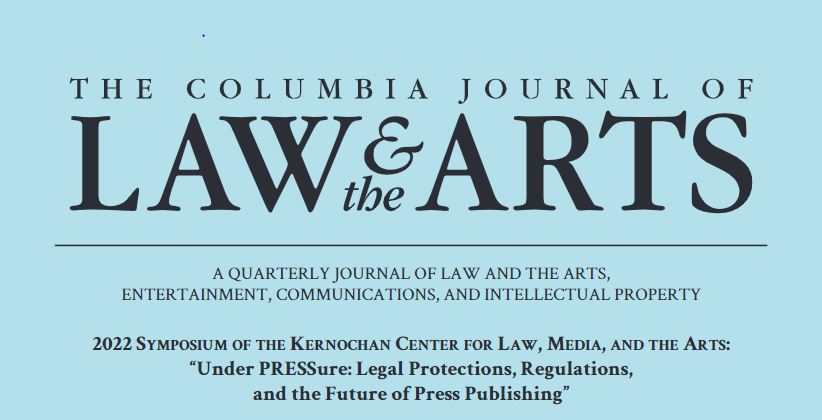
With the mudslinging of another presidential election upon us, it is more important than ever to promote reliable news sources. Foreign interference in our social media feed has already been identified as we approach voting day in November. In the last post, we discussed the efforts of Dan Hurd to save bankrupt Indiana newspapers. The health of modern newspapers in our society is important to archivists who assess documents using rigorous checklists for cultural and historical importance before committing the space and time to saving documents.
It is vital to delve further into this topic before moving on to more tangible forms of preservation, because the future of newspapers is still under threat worldwide. The Spring of 2023 quarterly issue of The Columbia Journal of Law & the Arts, Vol. 46, No. 3, includes writings from a symposium focused upon the legal profession’s approach to conspiracy news and the exclusion of journalists who protect our communities. You are encouraged to peruse the journal yourself using the link below—it is an open source, free to the public. This post highlights the article entitled “Addressing the Power of Imbalance,” written by Hal Singer, an adjunct professor of Economics at the University of Utah.

https://journals.library.columbia.edu/index.php/lawandarts/article/view/11774/5965
The article quantifies the ways in which social media sites suffocate the professional journalism in newspapers. A Judiciary Antitrust Subcommittee concluded that several large online firms (purveyors of social media and search engines) possess heavy-handed influence over the dissemination and profit potential of what they call “trustworthy sources of news online,” and this situation undermines “the availability of high-quality sources of journalism.” In essence, local newspaper publishers are being pushed out of the market by the monopolistic practices of the very tools people use to find them.
Singer asserts that, “the decline in newspaper advertising revenue coincides with the rise of platform power. From 1956 through 2005, advertising revenue for U.S. newspapers steadily increased, peaking around $50 billion in 2005….(but) In the mid-2000s, Facebook and Google began to consolidate their power…Since 2006, U.S. newspaper advertising revenue declined from $49 billion in in 2006 to $18 billion in 2016” (p 334).
The profit margins of newspapers fell considerably when smartphones came into common use. Newspapers have traditionally been among the highest-ranking archival items, because of their immediate cultural and historical qualities. From the standpoint of newspaper librarians who regularly use newspaper journalism for patron research projects, local newspaper production must be stabilized. While the judicial system seeks to correct a practice that allows junk news to prevail over journalism, here are some sobering facts provided by Singer:
• “The negative employment trends (of newspapers) can have ripple effects throughout local economies. When reporters, correspondents, and broadcast news analysts along with the other supporting employees…lose their jobs, they lose incomes to spend at….local businesses.”
• “The elimination of local news threatens democracy. A critical function of a local newsroom is coverage of local and state government affairs. Without this coverage, Americans are more likely to rely on national news and partisan heuristics to make political decisions….Research shows that in areas with higher local news coverage, voters are better informed…Local newsrooms may also provide a check on local government corruption and mismanagement.”
• “As professional news dwindles, fake news fills the void. The House Judiciary Report notes that ‘the gap created by the loss of trustworthy and credible news sources has been increasingly filled by false and misleading information.’ This comes as no surprise since the dominant platforms ‘face little financial consequence when misinformation and propaganda are promoted online’….this shift is expected to lead to a greater spread of both partisanship and misinformation, leading to significant social harms.”
• “In an August 2020 survey, ‘relatively high level of misperception’ could be found among those receiving news….from social media sources, while the ‘lowest levels of misperception’ was found among those receiving information from ‘local television news, news websites or apps, and community newspapers.’”
Does your library or repository have a close relationship with the newspaper publishers in your county? Are they in sound financial shape—what can your institution do to raise awareness of their needs?
